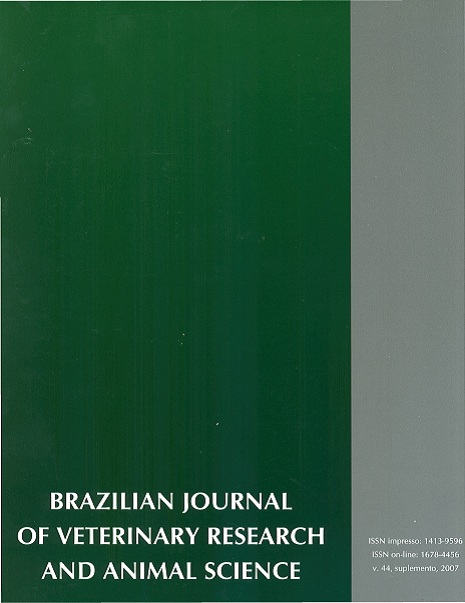Canine T - cell lymphoma: a morphological, epidemiologic and clinical study of 38 cases
DOI:
https://doi.org/10.11606/issn.1678-4456.bjvras.2007.26597Keywords:
Canine malignant lymphoma, Epidemiological aspects, Lymphoma anatomical classification, Lymphoma clinical stagingAbstract
The aim of this study was to evaluate the incident and clinical, morphological and immunological aspects of canine T-cell lymphomas. From 71 canine lymphomas, 38 were classified by immunohistochemistry as T-cell lymphomas. According to the Working Formulation and Kiel classification, 18 were classified as intermediate-grade, 15 as high-grade and 5 as low-grade. The pattern of lymphomatous proliferation was diffuse in all 38 animals. T-cell lymphoma was more common in defined breeds (24/38), such as Boxers, English Cockers and Rottweilers. The occurrence of T-cell lymphoma in males (21/38) was greater than in females and the median age was 5.8 years (1 to 13 years). For the anatomical classification and the clinical staging of T-cell lymphomas, the most common were multicentric form (29/38) and stage IV (15/38) and III (14/38), respectively.Downloads
Download data is not yet available.
Downloads
Published
2007-12-03
Issue
Section
UNDEFINIED
License
The journal content is authorized under the Creative Commons BY-NC-SA license (summary of the license: https://
How to Cite
1.
Moreno K, Bracarense APFRL. Canine T - cell lymphoma: a morphological, epidemiologic and clinical study of 38 cases. Braz. J. Vet. Res. Anim. Sci. [Internet]. 2007 Dec. 3 [cited 2024 Apr. 20];44(supl.):103-10. Available from: https://www.revistas.usp.br/bjvras/article/view/26597





